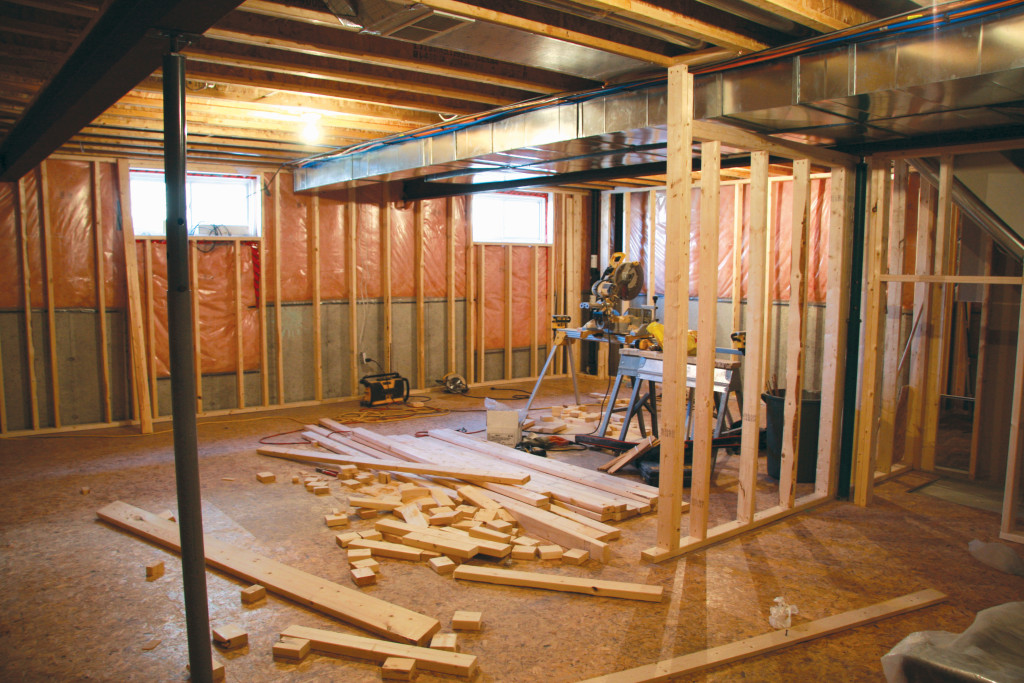- Basement conversions to children’s rooms offer benefits like improved cognitive ability and increased property value.
- Prioritize water issues inspection, structural integrity, indoor air quality, and lighting evaluation in the basement.
- Renovations should address safety concerns, augment light and ventilation, and enhance comfort and appeal.
- Gather room essentials like a bed, work desk, and storage units, and incorporate child-friendly decoration while ensuring safety.
Transforming a basement into a child’s room is an excellent, efficient use of space. A basement offers a distinctive environment that can be easily customized to suit a child’s needs and interests. It provides a designated area for children to sleep, play, and learn. In fact, according to an Oxford University study, children with their rooms are likely to develop better sleep patterns, indirectly contributing to improved cognitive ability. Furthermore, the National Association of Home Builders reports that basement remodels hold a high return on investment, with an average of 70% of expenditure recouped upon home resale. Thus, not only does converting a basement into a child’s room benefit your child’s growth, but it also enhances the overall value of your property.
However, there will be plenty of preparations to ensure the basement is suitable for your child’s needs. This guide aims to aid you in creating a safe, functional, and inviting space for your child to thrive in the basement.
Assess Condition

Of course, the basement’s purpose is often for storage or service, so it may not be ready for a child’s room yet. As a result, parents must check the basement for any potential hazards. Here are a few tips to consider:
Check for Water Issues
Before any transformation begins, it’s essential to check for any signs of water issues. Inspect the basement for water stains, mold growth, or a musty smell, which might indicate moisture or water problems. If your basement has a history of flooding, consider hiring basement flooding repair services. The basement is prone to flooding because it is the home’s lowest part. Regular maintenance and early intervention can prevent costly repairs in the future and safeguard your child’s health.
Inspect Structural Integrity
Structural integrity is another vital aspect to examine. Ensure the foundation, walls, and flooring are solid and free from damage. Look for cracks or other signs of structural weakness. If you discover significant issues, it’s wise to consult a structural engineer to address these problems and ensure the safety of the space.
Test Indoor Air Quality
Indoor air quality is crucial for a child’s room. Basements can often trap radon, a harmful gas, or have poor ventilation, leading to stale and stuffy air. Testing for radon and installing an effective ventilation system is advisable to maintain a fresh and healthy atmosphere in the basement.
Evaluate Lighting
Basements typically lack natural light, essential for a child’s room. Evaluate the existing lighting and consider ways to augment it. Install sufficient artificial lighting and, if feasible, create opportunities for natural light by adding windows or egresses. Good lighting can enhance the appeal of the space and contribute to your child’s well-being.
Performing Renovations

Performing renovations is a critical step in converting your basement into a child’s room. Renovations help transform the space from a cold, functional area into a warm, inviting room where your child can play, learn, and grow. The upgrades should address any safety concerns, increase light and ventilation, and create a comfortable and appealing space for a child.
Start by repairing any cracks or damage on the walls, and then apply waterproofing paint or sealer to prevent moisture penetration. This step is crucial to avoid water damage and mold growth, which can lead to health issues.
Insulation is vital in a basement conversion to maintain a comfortable temperature and reduce noise. Insulated walls can keep the room warm during winters and cool during summers, providing a comfortable environment all year round. Basement floors are usually concrete, which can be cold and hard. Consider installing warmer and softer carpet or vinyl flooring, making it safer and more comfortable for children.
Choose kid-friendly, non-toxic paints in light colors to brighten up the space. Decorate the room according to your child’s preferences to help them feel at home. Remember, every renovation project is unique. Planning carefully and consulting professionals as needed to ensure a safe and successful basement conversion is essential.
Gather the Child’s Room Essentials
Securing all the essentials for a child’s room is pivotal in creating a comfortable, functional, and stimulating environment that supports your child’s growth and learning. A well-designed space facilitates restful sleep and encourages play and creativity while storing all your child’s belongings in an organized manner.
Start with the foundational pieces like a bed, a work desk, and storage units like bookshelves, drawers, and wardrobes. Ensure the bed is comfortable and the right size for your child. A work desk promotes good study habits and provides a dedicated space for learning and creativity. Storage units, meanwhile, teach kids about organization while keeping clutter at bay.
Decorative elements like wall art, rugs, and curtains contribute significantly to the room’s ambiance. While aesthetics are important, ensure that the decor reflects your child’s personality and interests to make it theirs.
Finally, safety should be a paramount consideration in a child’s room. Childproof the space by adding safety covers on outlets, securing furniture to walls to prevent tipping, and using window guards and safety gates if necessary.
Final Thoughts
Converting a basement into a child’s room is an exciting project offering numerous benefits for your child and your home. It provides a designated space for children to thrive, maximizes the use of underutilized space, and adds value to your property. Proper planning, thorough assessments, and careful renovations can create a safe, functional, and inviting room.

